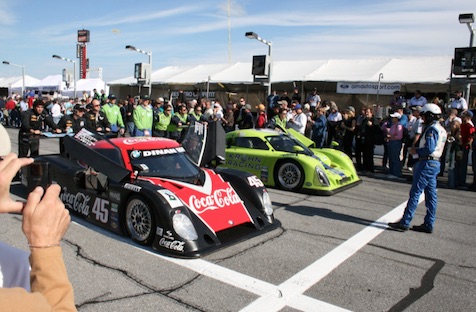
The specifics of the IMSA Championships, which includes the 24 Hours of Daytona, make them not the easiest to understand. That’s why we decided to answer the main questions about this vital American marathon.
Do they ride the oval for 24 hours?
No. When NASCAR’s iconic boss Bill France decided to build an oval track in the very south of Florida in the late ’50s, he first gave it an irregular shape by “breaking” one of the straights in two with a speed bend, and for the second he provided a track system on the inside.
NASCAR opened the track in 1959, and three years later, it first held a 3-hour race. It used a unique configuration with a large part of the oval, a large section of the “infield,” and the chicane on the longest straight. The first winner, by the way, was Dan Gurney.
Soon the distance was increased to 2,000 km, and in 1966 it was brought up to a daily. The route has not changed since then. Its length is 5.73 km, and the record for the maximum distance remains unsurpassed since 1982 when the crew on a Porsche 935 managed to overcome 719 laps or nearly 4444 km in aday.
So it’s like Le Mans, only American?
Yes and no. The tracks of the two marathons differ significantly: in Le-Mans, the participants do not have to rush in profiled curves with an angle of inclination of 31 degrees. However, the average speed in Daytona is noticeably lower, as there are more corners and they are slower on the whole.
In addition, the “infield” lane is relatively narrow and bumpy, and the laps in America are traditionally much less accommodating. There are no LMP1 prototypes here, which rule the ball at Le Mans, and one crew usually includes up to five people.
At Daytona, there’s no need to attack 100 percent as the race progresses. The first stretch, about 21 hours, is enough to go fast and avoid trouble by staying in the lap with the class leader. And only the final three hours you need to give it all: they decide the fate of the victory.
If you look for the main (apart from the duration) similarity between the two races, “24 Hours of Daytona” is formally the first stage of the IMSA marathon championship, but it has its own value. Like the Le Mans – or the Indy 500 – many competitors do not start all the other races of the season, concentrating only on the main race.
If there’s no LMP1, then what is there?
The peculiarity of a marathon in Daytona is that the dispute for the victory in the overall classification here is fundamentally different machines. Europeans come to Florida with their LMP2 prototypes, where local teams with their cars – Daytona Prototype (DPi) – wait for them.
Historically, Porsche had the most wins as a manufacturer (18). Gamblers analyze such information and use review sites, such as https://bookmaker-ratings.com/, to choose the trusted betting operators.
IMSA organizers have allowed automakers to modify the chassis of all four brands, selected by the FIA since 2017 for LMP2, and instead of the standard Gibson V8 4.2 engine within the DPi specification to put their own. Thus were born Cadillac DPi-V.R (in “maidenhood” – Dallara P217), Nissan Onroak DPi (Ligier JS P217), Mazda RT24-P (Riley Mk. 30), and since this year, the Acura ARX-05 (ORECA 07) was added to them.
They use entirely different engines: from 5.5 litres to 2 litres with a turbo, and the equality in speed is ensured by “fine-tuning” the specifications for each brand individually.
In addition, there are two classes of Gran Turismo: professional GTLM, where the factory teams and the same cars compete in the WEC. There, the new BMW M8 GTLM coupe makes its debut this year.
Also, there is a semi-amateur GTD with slightly simpler, cheaper, and slower technology, where eight different brands are represented.
Before 2017, there was a PC category with identical prototypes, but it was abolished (which no one seems to regret), and several of the strongest teams moved to the top class.
Leave a Reply
You must be logged in to post a comment.